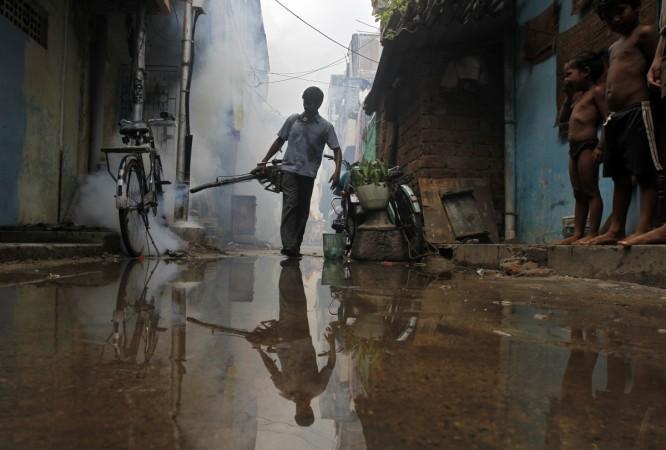
Even as monsoon has just arrived in South India, the fear of dengue is already looming large with 380 cases reported in May in Karnataka, the State Health Department reportedly said.
Hospitals in Bangalore have stepped up surveillance systems as they are witnessing an increase in the patient admissions due to dengue.
"We are seeing a rise in cases of dengue, with at least a couple of cases in the OPD daily. There are several cases of suspected dengue and viral fever cases are also on the rise. Many patients are referred to BMCRI from other hospitals across Karnataka and other States as well. As the monsoon has been late, it will take another two weeks for the gravity of the situation to be understood," KR Ravindra, associate professor at Bangalore Medical College and Research Institute (BMCRI), told the Hindu.
What is Dengue?
- According to the World Health Organization (WHO), Dengue is a mosquito-borne viral infection which causes flu-like illness, and rarely develops into a potentially lethal complication.
- Dengue virus is transmitted by female mosquitoes mainly of the species Aedes aegypti . This mosquito also transmits chikungunya, yellow fever and Zika infection. Dengue is widespread throughout the tropics,
- The number of dengue cases has risen dramatically over past several decades. Nearly half of the world's population is now at risk.
- Dengue is more prevalent in crowded urban and semi-urban areas with tropical and sub-tropical climates.
- Although there is no specific treatment for dengue/ severe dengue, but early detection and proper treatment significantly lowers the fatality due to the disease.
- A vaccine for dengue licensed by the regulatory authorities in several countries may help prevent dengue in people in the age group of 9-45 years living in high-risk areas.
How is Dengue transmitted?
The virus is transmitted to humans through the bites of infected female Aedes aegypti mosquito.
After a person is bitten by the mosquito, he or she can transmit the infection for a maximum period of 12 days. The humans become a source of virus for uninfected mosquitoes and thereby spread the disease.
Dengue Symptoms
Dengue usually persists in the form of flu-like symptoms a severe, flu-like illness that affects infants, young children and adults, but is rarely fatal.
A high fever (40°C/104°F) accompanied by severe headache, pain behind the eyes, muscle and joint pains, nausea, vomiting, swollen glands or rash are the most common symptoms of dengue. These symptoms last anywhere between 2 to 7 days.
The symptoms of severe dengue according to WHO could be plasma leaking, fluid accumulation, respiratory distress, severe bleeding, or organ impairment.
The dangerous signs could appear along with the common symptoms or even after that. A sudden decrease in body temperature (below 38°C/100°F), severe abdominal pain, persistent vomiting, rapid breathing, bleeding gums, fatigue, restlessness and blood in vomit are alarming signals. The patient needs to be admitted to the hospital in the next 24 to 48 hours to avoid further complications and risk of death.
Treatment, Prevention and Control
Although currently there is no specific treatment for dengue yet, but adequate care by physicians and nurses can help reduce the mortality from 20 percent to 1 percent. Here are WHO recommended guidelines for effective dengue control:
- disposing of solid waste properly and removing artificial man-made habitats;
- covering, emptying and cleaning of domestic water storage containers on a weekly basis;
- applying appropriate insecticides to water storage outdoor containers;
- using of personal household protection such as window screens, long-sleeved clothes, insecticide treated materials, coils and vaporizers;
- improving community participation and mobilisation for sustained vector control;
- applying insecticides as space spraying during outbreaks as one of the emergency vector-control measures;
- active monitoring and surveillance of vectors should be carried out to determine effectiveness of control interventions.
Source: WHO

















